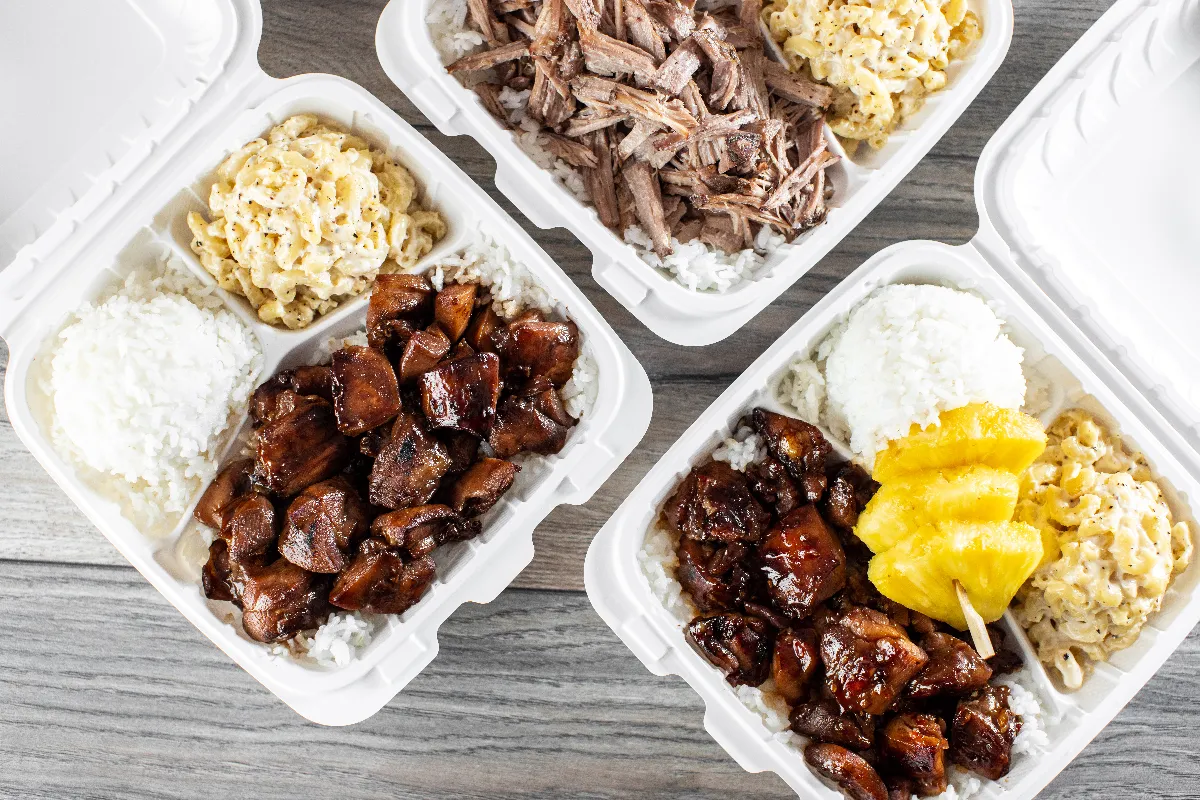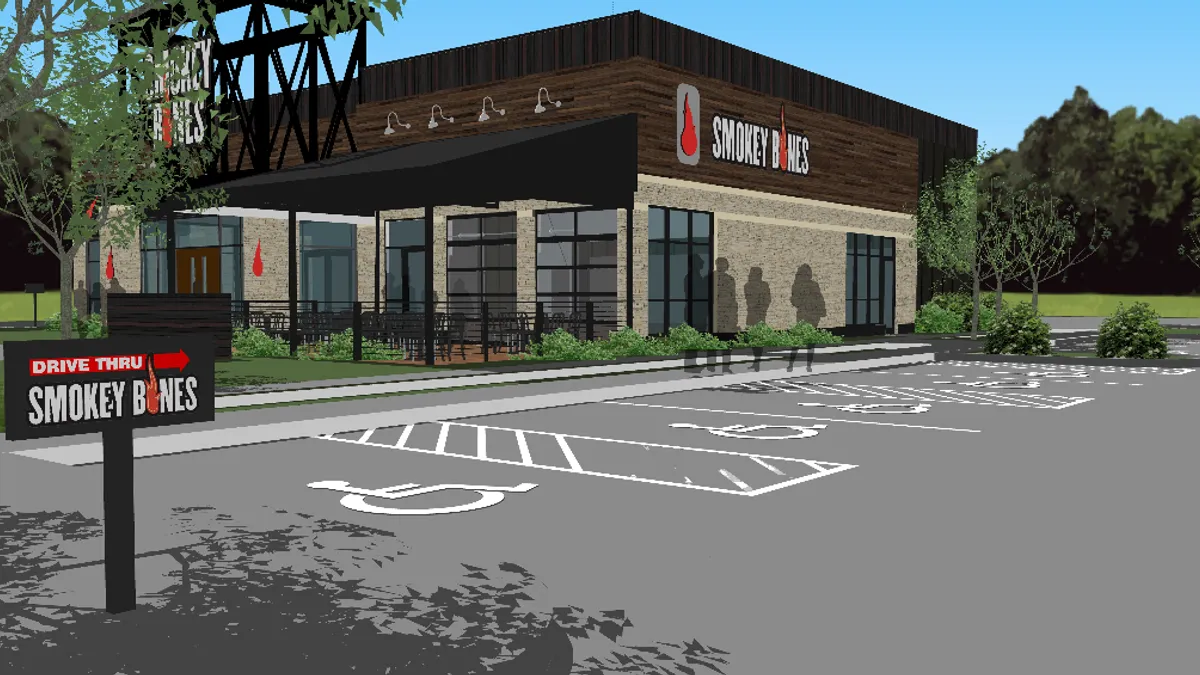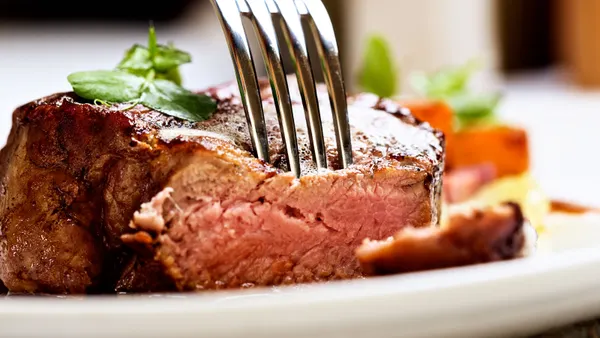This is the third article in a series exploring strategies chains are deploying to overcome challenges as they expand their drive-thru channels.
In June, Smokey Bones opened its first drive-thru. The full-service barbecue chain felt the channel was a natural extension of its growing focus on virtual brands and off-premise business, both of which have performed well with customers, CEO James O’Reilly said.
“We decided to have a traditional drive-thru — unlike other variants that we are seeing in the industry — because it has the least amount of friction in the guest experience,” O’Reilly said. For example, a restaurant with a pickup-only window requires customers to order online or via a mobile phone and pay ahead of time, adding potential friction points for diners.
But as a long-time full-service restaurant, Smokey Bones had to adapt its menu to ensure that customers could be served in minutes. Other chains, such as Atomic Wings and Hawaiian Bros, adapted their menus and food prep to make them more compatible with drive-thru operations. Even long-time drive-thru chains continue to update their menus. For example, McDonald’s trimmed complex items, like its premium sandwiches, to cut down drive-thru times in 2019.
Operators adding a drive-thru cannot expect all of their menu items to translate well to the service, and innovation will be necessary, experts said. If a menu is complex or allows for a lot of customization, that is a challenge that needs to be considered, said Shelley Harris, former interim chief brand officer at Schlotzsky's and current restaurant category president at Focus Brands. Drive-thrus make up about 85% of the sandwich chain’s system.
Operators also have to understand the cycle time on making products for drive-thru service. With a traditional drive-thru, there are opportunities to pre-cook or pre-stage items. If a restaurant doesn’t have the ability to do that, it’s going to impede speed of service, Harris said. “The general expectation from a consumer who uses the drive-thru is ‘I have an expectation of how long I'm willing to sit in this drive thru.’”
Smokey Bones’ express menu was built with food that can be delivered within a five-minute service time. If consumers want other items on the menu, such as a full rack of ribs, the chain offers a full curbside menu where they can place orders at the drive-thru and pay and wait in designated parking spots until delivery, O’Reilly said.

Hawaiian Bros — which has 35 stores, most of which have drive-thrus — had to become more technical in how it figured out food preparation, co-founder Cameron McNie said. The chain’s menu consists of lunch plates with two scoops of rice, one scoop of macaroni salad and another scoop of protein. It also used historical order sales to know when the kitchen would need fresh batches of various ingredients to ensure that everything served is still fresh, he said.
Having staff members take orders via tablets outside the restaurant also helps maintain a balance of how many orders can be completed in the kitchen at a time.
For businesses that also offer dine-in service, operators should understand the difference between the two channels. Dine-in customers want to sit in the dining room and talk with people, and their food doesn’t need to be served immediately. This is why having separate makelines for drive-thru and dine-in services are important to maintaining both parts of the business, McNie said.
For Hawaiian Bros, that meant renovating its existing restaurants, including adding tens of thousands of dollars worth of equipment, sometimes tearing down walls and rearranging layouts, McNie said.
Atomic Wings did a lot of research for its forthcoming drive-thru launch as well as testing to reduce cook times to an acceptable speed of service for drive-thrus, CEO Zak Omar said. That meant putting in the right kitchen equipment, such as steamers. Its biggest competitors don’t have drive-thrus because it takes about 12 minutes to cook wings, Omar said. Atomic Wings has focused on getting that speed down to about three minutes.
“We believe we can play really well in this space and our average unit volume should be significantly higher with drive-thrus,” Omar said.










